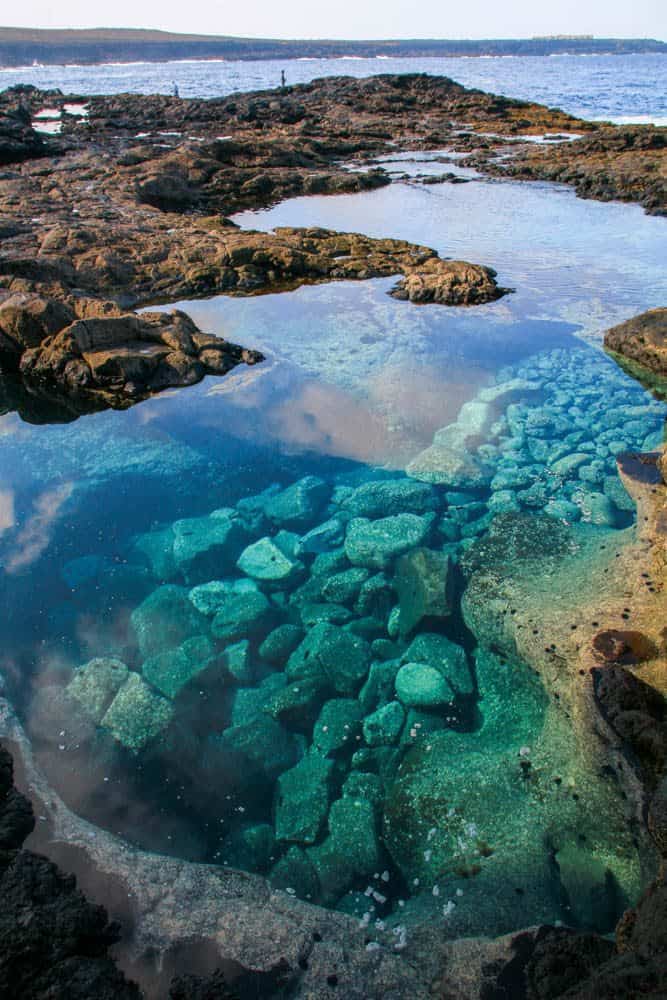Welcome to the Magical World of Rock Pools!
Hello, beach-loving families! Are you ready to embark on a splashing adventure into the intriguing universe that lies within rock pools? These natural coastal aquariums are not only a source of fascination for kids but also wonderful outdoor classrooms bursting with marine wonders. In this comprehensive guide, we’ll show you how to navigate these fascinating ecosystems safely and enjoyably while nurturing your child’s curiosity and love for nature.
Introduction to Rock Pooling
Rock pools, or tidal pools, are shallow pools of seawater that form on the rocky intertidal shore. When the tide goes out, these miniature worlds left behind are teeming with life, waiting to be discovered. Rich in biodiversity, rock pools offer an accessible glimpse into the ocean’s mysteries, providing an ideal setting for introducing children to marine biology and environmental stewardship.
Why Rock Pooling is a Perfect Activity for Kids
Rock pooling is more than just a fun outing; it has numerous educational benefits for children. It encourages them to be keen observers, sparks their imagination, and teaches them about the fragility and intricacy of the ecosystems. As they explore, they develop a deeper understanding of tides, life cycles, food chains, and the importance of conserving our marine habitats.
Benefits of Rock Pooling:
- Education: Kids learn about different species, habitats, and conservation.
- Physical Activity: It’s an opportunity for some gentle exercise as they clamber over rocks.
- Family Bonding: Quality time together with a shared focus.
- Mental Wellbeing: The seaside environment can be incredibly calming and restorative.
Preparing for Your Rock Pool Adventure
Before you set off to scour the coast, there’s a little prep work to do – after all, the best adventures are safe adventures! Here’s what you’ll need to bring and consider:
What to Pack for Rock Pooling:
- Appropriate Footwear: Water shoes or old sneakers with good grip to navigate slippery rocks.
- Sun Protection: Sunscreen, hats, and UV-protective wear even on overcast days.
- Water and Snacks: Energy-boosting snacks and plenty of water to stay hydrated.
- Buckets and Nets: Small nets and clear containers for gentle observation of creatures (but always release them back where you found them).
- Identification Guide: A waterproof guide to help identify creatures and teach kids about them.
- First Aid Kit: Just in case of scrapes or stings.
- Camera or Phone: To document your finds without disturbing the environment.
Finding the Perfect Rock Pool
Not all rock pools are created equal, and finding a good one is part of the adventure. Look for larger pools with plenty of hiding spots such as under rocks and within crevices – these will likely be home to a greater diversity of life. Also, consider the tides; aim to arrive an hour or so before low tide to give yourself plenty of time for exploration.
Tips for Selecting a Rock Pool:
- Choose a safe area with easy access and not too far from amenities, especially with young children.
- Seek out areas known for their biodiversity – local tourism websites or nature reserves are good sources of information.
- Keep an eye on the tides – an outgoing tide will reveal new pools for exploration, but be mindful not to be cut off by the incoming tide.
Now that you’re all set, let’s explore how to make your rock pooling adventure both educational and delightful for the kiddos! We’ll cover safety, spotting techniques, and ways to encourage environmentally friendly practices among your young explorers. So grab your buckets and nets, and prepare to dive into the captivating world where sea meets shore!

The 5 Essential Things Parents Should Know Before Rock Pooling
Preparing for a trip to the rock pools with your children is an exciting moment, but safety and awareness should be your topmost priority. Ensuring you’re well-prepared will mean you can relax and enjoy discovering the hidden wonders of the rock pools together.
1. Understand the Tides
Rock pooling is best done at low tide when the sea has retreated, and the rock pools are revealed. Check local tide times and aim to start your exploration just as the tide is going out. This ensures you have the maximum amount of time before the water returns. Remember the sea can be unpredictable; never venture too far and always keep an eye on your surroundings to avoid being cut off by the tide.
2. Dress for Success
Weather by the coast can change rapidly. Dress your children in layers so they can be comfortable throughout the day. Encourage them to wear hats and apply broad-spectrum sunscreen to protect against the sun’s rays. Waterproof jackets are also a good idea in case of sudden showers.
3. Respect Marine Life
While rock pooling is a wonderful way to learn about marine organisms, it’s vital to disturb them as little as possible. Teach your children to handle all creatures with care and to put rocks back gently after looking underneath. Avoid taking any living creatures or shells home; observe them and then return them exactly where you found them.
4. Safety First
The rocks around pools can be slippery and sharp. Outfit your kids with sturdy shoes that have a good grip. Explain the importance of not running and being aware of their footing. It’s also wise to familiarize yourself with local sea life that could pose a hazard, such as jellyfish or weever fish, and know how to respond to stings or bites.
5. Leave No Trace
Lastly, instill in your children the importance of preserving natural habitats by taking home everything you brought with you. Waste and litter can be harmful to marine life and spoil the beauty of the coast. By teaching kids to respect nature, you’re helping nurture future generations of conservationists.
Rock Pooling Safety Tips
As with any outdoor activity, safety is paramount. Keep your rock pooling adventure stress-free with these simple safety tips:
- Always supervise children closely, particularly if they are near water or climbing on rocks.
- Check the weather forecast before you leave, as conditions can affect the safety of rock pooling areas.
- Wear life jackets for non-swimmers or when exploring areas with deeper water.
- Be aware of local wildlife. Some creatures may sting or bite if they feel threatened.
- Respect the environment. Don’t lift heavy rocks that could be home to fragile ecosystems or could injure someone if dropped.
Spotting and Identifying Marine Life
Encouraging children to spot and identify marine life can turn a day at the beach into an educational treasure hunt. Here’s how to make it engaging:
- Bring a local rock pooling or marine life guidebook to help match species with pictures.
- Use your phone or camera to take photos, which you can research together once back home.
- Ask children questions about the animals they find, such as what they think it eats or how it protects itself from predators.
- Compare different rock pools to see if they can spot patterns or differences in the habitats and the species that live there.
Encouraging Environmental Stewardship
Taking kids rock pooling is an excellent opportunity to teach them about environmental conservation in a hands-on way:
- Discuss why we should protect marine life and the importance of clean oceans.
- Participate in a beach clean-up or simply pick up litter when you see it, making sure to sort and recycle appropriately.
- Use your rock pooling trip as a way to teach about the broader impacts of pollution and climate change on ocean life.
- Encourage curiosity and ask your children to think about how they can help protect the places they enjoy visiting.
For more great fun click here. For more information see here
Disclaimer
The articles available via our website provide general information only and we strongly urge readers to exercise caution and conduct their own thorough research and fact-checking. The information presented should not be taken as absolute truth, and, to the maximum extent permitted by law, we will not be held liable for any inaccuracies or errors in the content. It is essential for individuals to independently verify and validate the information before making any decisions or taking any actions based on the articles.




